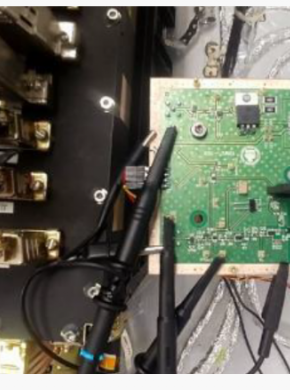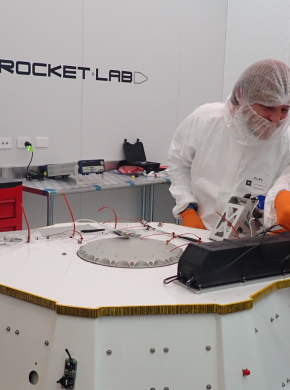Aidan is the tenth project to be initiated and funded under the ARTES Partner Programme element, aimed at supporting industry-initiated Public Private Partnerships. It is a partnership with the Satellite Operator Viasat which will develop, validate and roll out key elements of an innovative Ground Segment solution.
Aidan was established to exploit the benefits offered by present and emerging High-Capacity Satellite (HCS) networks and to deliver competitive products to global customers. The prime contractor is Viasat Antenna Systems (CH), leading a European consortium including:
- Viasat Nederland (NL)
- Lionix Intl. (NL)
- TNO (NL)
- General Atomics – Synopta (CH)
- the Netherlands Aerospace Centre - NLR (NL).
In preparation for commercial services, Viasat will carry out pre-commercial piloting activities to evaluate how the different elements improve the service performance and will assess the customer response to the proposed solutions.
The development is concentrating on six technical areas, namely:
- a flat panel airborne terminal based on phased-array antenna technology, intended to expand satellite in-flight connectivity across a greater range of aircrafts and with a wider geographical coverage
- a photonic antenna beam-former for the future evolution of the phased-array antenna solution
- an upgrade of the fixed beam residential terminal for optimising the efficiency of the upcoming Viasat-3 (VS-3) satellite system
- innovative network management modules for the Satellite Access Nodes (gateways) and the Network infrastructure that are intended to be deployed in the VS-3 system
- a hybrid connectivity system for land-mobile users
- an optical feeder link system for future HCS systems
Further detail about each of these areas can be found below.
1/Phased Array Development
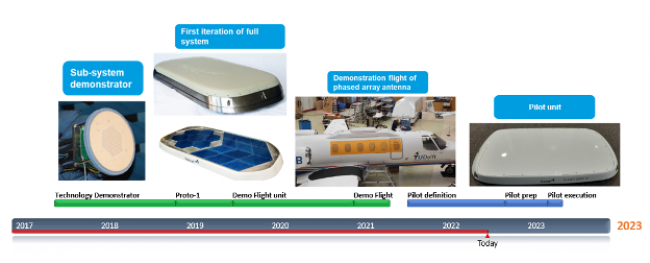
Progressing the phased array technology is a core function of the Aidan programme. This comprises several iterative developments, building on the general design approach which was validated back in the technology demonstrator phase of the development in 2018.
Subsequent iterative prototypes have been developed, culminating in the successful demonstration of the final unit. This was facilitated by the partner institute NLR (Dutch Aerospace Institute), who carried out a demonstration flight of the antenna between the Netherlands and Switzerland. Further information about this event, including multiple videos and interviews, can be found on the Viasat website: https://www.viasat.com/phased-array/


Phased Array Pilot
Having successfully demonstrated the deployment of the phased-array antenna in the operational environment, the Aidan PPP will continue to deliver what is ultimately a commercial pilot of the design. This will involve the customisation of the antenna to a specific customer aircraft as well as its full industrialisation.
2/ Photonic Beam Forming Development
A new generation of optical beamforming modules for satellite communications antennas, specifically those applied in airborne Ka-band phased-array terminals, is being developed by Dutch microsystems company LioniX International as part of the Aidan project. The modules optimise on broadband network capacity through real-time, fast, on-the move tracking of the geostationary satellite terminal using microwave photonics-based beamforming. These modules include tuneable true-time delays that synchronise the individual RF-signals to and from the antenna elements.
Based on photonic technology the project also addresses the need to “build back greener” by spearheading the use of low-power stress-optic switches for beam steering in combination with on-chip optical signal processing.
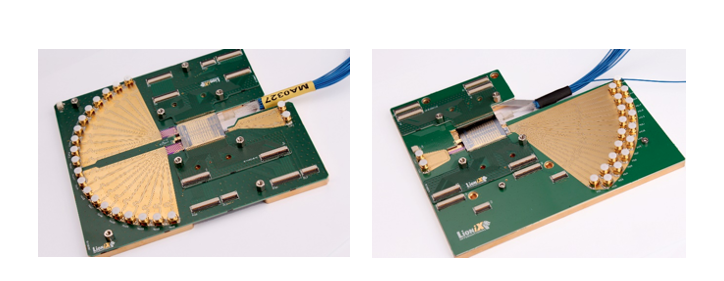
Responsive beam steering
Following on from the successful antenna test flight in May 2021, the beamforming modules will be incorporated into flat panel phased-array antennas, built by Aidan project partner Viasat. The combined components will offer responsive on-board connectivity for high-capacity broadband aeronautical communication.
The beamforming modules also offer a range of other advantages including:
- No performance limit for optical processing compared with RF bandwidth limitations
- Modules and antenna systems can be deployed on board aircraft directly in the optical domain using optical fibres
- Optical fibres are low cost and have low-loss properties, resulting in greater flexibility in the placement of system components and more robust efficient systems
3/Development of the Next Generation of Residential Terminals
The next generation of residential terminals are planned through Aidan which will:

- improve the overall network capacity through performance improvements
- have a greater appeal for the end user as a result of simple installation and aesthetic design
- reach > 1 million residential customers
The self-peaking functionality of the new generation residential terminal, which allows the reflector to auto-peak to correct drift or other causes of mis-pointing over time, has been demonstrated successfully. The Aidan PPP on residential will continue to deliver a pilot field testing of the terminal. New generation residential terminals will be deployed on the residential network in order to demonstrate the network capacity improvement and validate the user experience of the new design.
4/Satellite Access Infrastructure
Networks need to be autonomous, with the freedom to be self-governing, and to control their behaviour through previously defined policies, without external human or machine interaction.
Part of the Aidan project looks at virtualisation and network automation features which will have the following benefits:
- Enable optimisation of the deployment
- Reduce the cost of network maintenance
- Enable rapid changes and abstraction of multiple satellite networks
To achieve these goals, the focus is on three main areas, all related to the concept of the autonomous network:
- Network automation – programmability
- Distributed metric aggregation system – next generation
- SD-WAN evolution - for residential users
SMART Network Infrastructure
An autonomous network will quickly adjust to evolving requirements to enable new services, business processes and models to be delivered reliably, resiliently, securely, on time and with the desired customer and application experience.
To achieve these objectives the four domains below encapsulate the network automation model, developed in the Aidan project as a baseline:
- Enhanced network automation
- Network anomaly detection and prediction
- Network orchestration for end-to-end services
- Intent-based networking
5/ Hybrid connectivity system for Ground Transportation Entertainment and Connectivity (GTEC)

This activity is looking to resolve the challenges for intercity coaches, buses, trains and emergency vehicles where the current cellular networks do not provide reliable coverage or a positive user experience and there is a lack of monetisation platforms for bus operators. The focus is to develop the GTEC system up to a prototype level (or Minimum Viable System). This will then be used to validate the use of satcom connectivity on a ground mobile environment
The activity aims to deliver:
- a prototype land mobile flat panel
- a resilient hybrid connectivity system
The connectivity system will consist of a multi-network (satellite and cellular) to guarantee the best availability and coverage in all areas (metropolitan and rural). The multi-network facilitates increased penetration of the satellite communications in the telecom market.
The work on terminals for land-mobile satcom services by the Viasat team has opened up the potential of the ground transportation market. The scope of this activity is to respond to the key technological challenges in order to deliver connectivity to land mobile platforms.
The initial trials of the hybrid connectivity system are underway in Europe and South America and will later be replaced by a flat panel phased-array antenna which is currently under development.


6/ Optical Feeder Links for future High-Capacity Satellite systems
As the demand for connectivity speed and data volume continues to increase, Viasat continues to push technological innovation towards increasing the capacity of a single satellite and reducing exploitation costs, in order to continue to improve the competitiveness of our network in the telecom market.
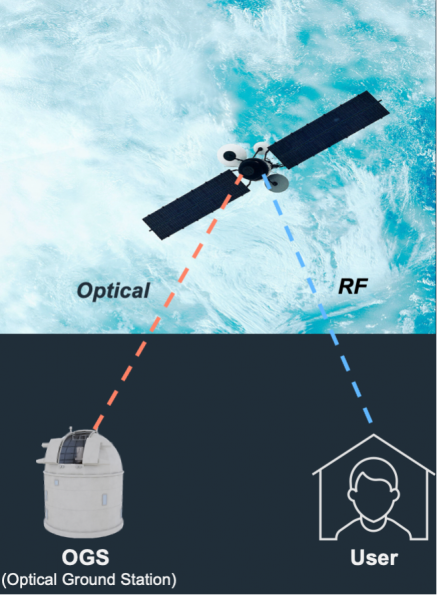
A crucial part of the system is the development of an optical Feeder Link to connect the satellite to the ground network, increasing the feeder link capacity. In the current architecture the feeder link is realized using radio stations working at radio frequencies. The possibility to use optical spectrum will have the benefit of increasing the capacity of the feeder link thanks to the large spectrum available.
Conclusion
For Viasat, the Aidan project will allow full exploitation of the higher performance potential of its next generation multi-spot, high throughput satellite fleet, and enhance the service offered both in performance and cost against competing technologies. This will reduce barriers to the adoption of satcom-based services.
For the partners, the developments carried out in Aidan will provide significant benefits, namely:
- Increase their competitiveness in delivering solutions with enhanced capability, flexibility, service deployment efficiency and cost effectiveness, for satcom fixed and mobile broadband markets
- Strengthen their positioning as ground segment suppliers both in the Viasat ecosystem and in the global market
In addition to these competitiveness advantages, Aidan will also deliver crucial benefits as a result of the forecast expansion in capability and size of the European companies involved, both in Switzerland and in the Netherlands. This includes the creation of a new Viasat entity in the Netherlands, and consequent generation of numerous new, high quality job opportunities.
ESA Aidan Implementation Manager
Massimiliano Simeoni
ESA / ESTEC Keplerlaan 1
2200 AG Noordwijk NH
The Netherlands
NEWS AND EVENTS
Automated management of satcom terminals gives MOBISAT the edge
A competitive ‘no touch’ satcom service solution is now simplifying the deployment of satellite communication networks in isolated areas. ‘MOBISAT’ has been developed under the ARTES Core Competitiveness programme by Spanish company Integrasys,…
Cutting edge composite antennas reach qualification for Canadian tech company Calian
An innovative composite 6m and 10 m Q/V band antenna system developed by Canadian technology company Calian Advanced Technologies has successfully demonstrated its performance capabilities after over-the-satellite testing in Guadeloupe.
Optical wireless study paves the way for cable-free telecoms satellites
A study backed by the European Space Agency has successfully demonstrated the viability of using optical wireless communications in satellites, in a move that could help reduce mass and costs by removing the need for cabled connections.
Oxford Space Systems commissions industrial scale knitted mesh production facility
Oxford Space Systems has developed a metal mesh manufacturing facility at their Harwell base, manufacturing foldable surfaces for their reflector antennas. The project, backed by the European Space Agency (ESA)’s ARTES Core…
Opportunity: People, Planet, Prosperity
The Thematic Call, in line with ESA’s vision to accelerate the use of space and the Director General’s Agenda 2025, targets space projects enabling “action beyond observation” within the vast ESG market described above where space technologies,…
ARTES AGILE is a new initiative from ESA aimed at facilitating short term high-risk technology developments, critical in defining the scope and development of future products and services for the satcom sector and vital in assessing the viability…
New entrants look forward to making a global impact in satellite communications accessibi…
ESA has partnered with two new companies through the ARTES Core Competitiveness programme, which helps industry to deliver innovation in satellite communications.
SatixFy to deploy baseband and modem equipment for Telesat lightspeed ground infrastructure
SX3099 Modem developed through the ARTES Core Competitiveness programme moves another step further deployment.
ARTES Advanced Technology: Inflatables to drag down small satellites
New activity - Inflatable structures for telecom satellites.
The need for ever-more powerful telecom satellites drives the development of the associated technologies. A key example is the need for lightweight, large systems such as solar…
AlbaPod: the most advanced space-proven PocketQube deployer
The ‘maker’ movement in electronics and the meteoric rise of smartphones have led to a surge in small satellites - such as nano- and picosatellites (picosats are the tiniest of smallsats). But something has to propel these pocket-size payloads…
Novel flat panel antennas give drones long-range satcom capabilities
A satellite communications antenna which fits snugly into the wing of a UAV or ‘Remotely Piloted Aircraft’ (RPA) for use in long-range missions has now ‘got its wings’ – giving the green light for a variety of civilian applications across the…
'Extraordinary efficiencies’ with next-generation space solar cell
Telecommunication satellites are demanding ever-increasing power for new technologies. This makes ever-more efficient and lightweight solar generators a must for full electric propulsion satellite platforms.
AZUR SPACE, German-based…





